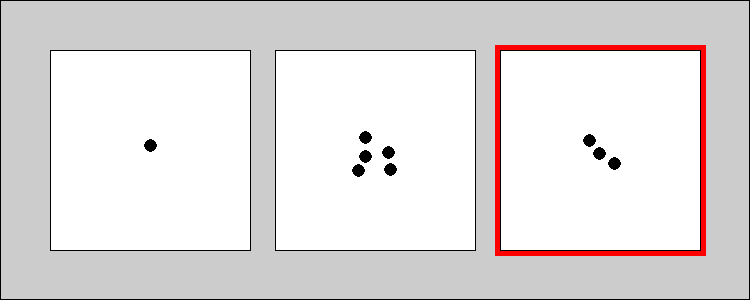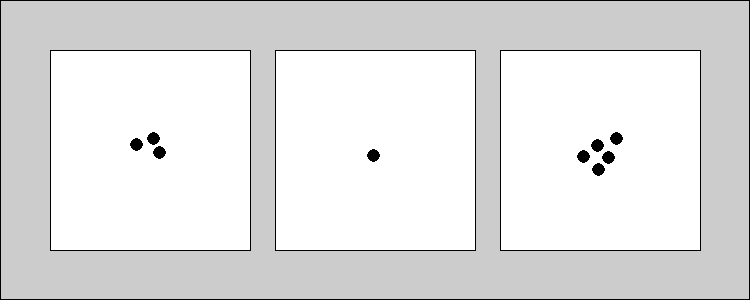We would appreciate your help with this small experiment, which we are conducting in order to learn how people speak and write. The experiment will take about 5 minutes of your time.
In the experiment, you will be presented with a succession of computer screens that depict squares with shapes in them. In each situation, you will see three squares, each of which may have none, one or more shapes in it. One of the three squares will be highlighted by means of a red window. Your task is to describe that square, in such a way that a reader of your description will know which square you are referring to. Crucially, however, the reader may not see these squares in exactly the same way as you, because the squares and their contents may be scrambled!
For example, you might see the following display:

So please keep the following points in mind:
(1) You want to send the reader a message that would enable him or her to click on the "same" square as the one that is highlighted in red for you. This square is NOT highlighted for the reader.
(2) The reader will see the same three squares you see, but to the reader, the squares may appear in different positions than to you. (In other words, you can't say "The square on the right of the screen.")
(3) The reader will see the same three squares you see, but to the reader, the shapes within a given square might be in a different spatial arrangement. (In other words, you can't say "The square whose shapes form a line.")
Many thanks for your help!
This experiment was investigating how people generate numerical descriptions. Our main interest is in understanding how people choose whether to use a number (e.g., "there are three circles") versus a less specific description (e.g., "the only square with circles").
The specific hypothesis is that people will tend to default to using a number whenever the number of objects is small and can be taken in with a glance. For example, we would expect that people would be more likely to mention the number of objects when describing the target square in Figure 1, where there are three items, than in Figure 2, where there are thirteen.
Figure 1

After establishing this basic finding, our plan is to run several further experiments to better understand why people do this. Specifically, we plan to investigate whether people do this because it is easy for them, or because they believe it would benefit the listener.
Thank you very much for your participation!